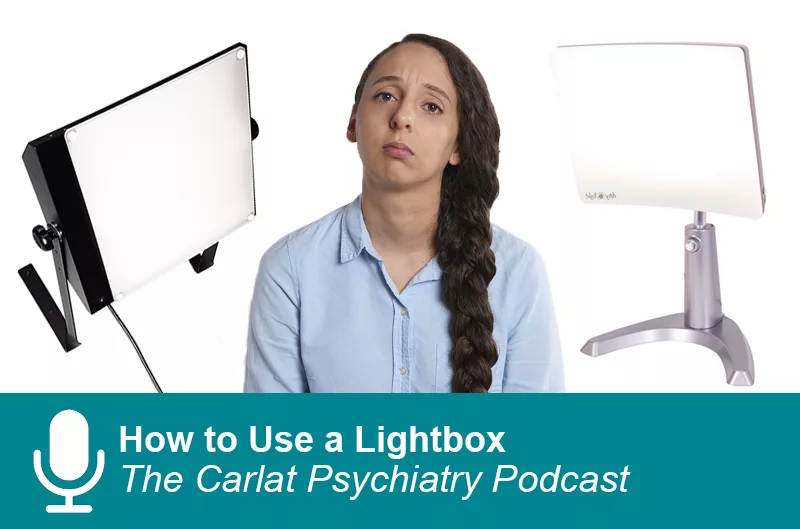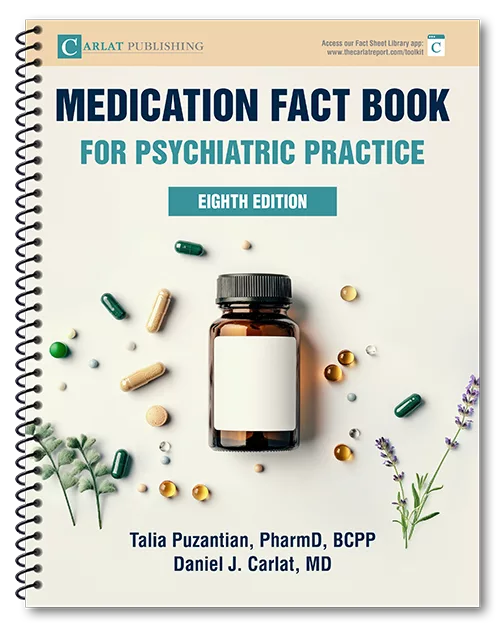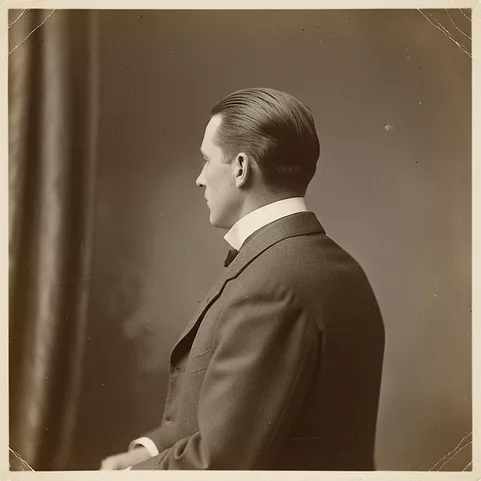Guide your patients to light therapy with this tutorial, including how to select a device, what time to use it, and how to position the box.
Published On: 7/26/2021
Duration: 12 minutes, 54 seconds
Related Articles: "Dark and Light Therapy," The Carlat Psychiatry Report, February 2019
Transcript:
Summer is in full bloom, but soon the light will start to dim in August. Then it will hasten its decline around the Fall equinox, September 22. And on December 21 it will reach its nadir on the shortest day of the year, the Winter solstice. And if you pay attention to these patterns you’ll likely pick up on some cases of seasonal affective disorder, and today we’ll teach you how to use the first line therapy for this – the light box.
Welcome to The Carlat Psychiatry Podcast, keeping psychiatry honest since 2003. I’m Chris Aiken, the editor in chief of The Carlat Psychiatry Report. And I’m Kellie Newsome, a psychiatric NP and a dedicated reader of every issue.
Kellie Newsome: On the surface, everything looked good for Norman Rosenthal in 1976. The South African doctor had just moved to New York City to start a psychiatric residency at Columbia. It was summertime, and he had boundless energy, which he poured into practice, studies, and research projects. But when wintertime came his energy was sapped, and he couldn’t imagine how he had taken on so much work. These seasonal shifts repeated themselves, and they were unlike anything he experienced growing up in the sunny clime of South Africa.
After graduating Dr. Rosenthal went to work at the National Institute of Mental Health, where he encountered a patient with similar – but more intense – winter depressions. The patient improved with artificial light, and Dr. Rosenthal put out a call in the Washington Post to see if anyone else out there suffered from similar symptoms. He expected a small handful to reply, but his phone rang off the hook for weeks. Thousands of people called.
That launched the first controlled trial of bright light therapy for seasonal depression. It was published in 1984, and its success has been followed by nearly 100 randomized controlled trials. Those studies have found that it works not just in winter depression but in non-seasonal depression, perhaps because we spend so much of our time indoors that we don’t get the amount of sunlight we need. Even the brightest indoor spaces are only half as bright as an overcast outdoor day (500 lux vs. 1000 lux), and far darker than a sunny one (10,000-30,000 lux).
Light therapy has an effect size in the medium to large range, and in head to head studies it generally works about as well as an antidepressant. It has also been used successfully to augment antidepressants. That means that light therapy is one of few natural or CAM therapies that works as well as medication – the others that come to mind are SAMe in depression and Silexan in generalized anxiety disorder. See our August 2020 issue online for how to use Silexan.
In this month’s issue we report on a new discovery – the first randomized controlled trial of light therapy in post traumatic stress disorder – and in this companion podcast we’re going to go over the basics of how to use light therapy in depression.
To start with, you’ll need to know how to recommend the right kind of light box.
Selecting a light box
Dr. Aiken: There’s a paradox to light therapy. The more popular a light box is, the less likely it is to work. That’s because the qualities that make them attractive ─ slim, portable, and unobtrusive ─ also keep them from giving off enough light to treat depression. Here’s what is required: a large screen (at least 12 x 17 inches) that hangs over the head, and gives off intense white-spectrum light in the white spectrum. “Full spectrum” and blue lamps do not have good evidence for better efficacy, and we don’t recommend them because they cause problematic glare.
Just how bright should the light box be? Ideally 10,000 lux, but it can also work as low as 2,500 lux. If the box is in the lower 2,500 range, your patient will just need to sit under it longer, like 2-4 hours instead of 30-60 minutes. The box also needs to have a filter to screen out dangerous ultraviolet rays.
OK, that’s a lot of specs, but you don’t have to go on an exhaustive search to find a good one. Since the FDA doesn’t approve these things, a group of researchers lead by Michael Terman at Columbia University has stepped in with specific product recommendations. Find them at the Center for Environmental Therapeutics, or www.cet.org. Currently they recommend Northern Light Technology’s BOX-elite OS ($180). Another good option that has been used in clinical trials is Carex’s Day-Light Classic, or Classic Plus ($100-140; the regular Classic has folding stands). The bulbs on a light box will lose a little of their therapeutic intensity over time, even if they continue to appear bright, so work best when replaced every 2-3 years. Replacement bulbs are around $20 on Amazon.
Timing the treatment
Kellie Newsome: It’s not just the quantity of light, but the timing that matters. Light therapy works in part by setting the biological clock, and morning light has the most potent effect on that circadian system. The “sweet spot” for light therapy is generally between 5:00 a.m. and 8:00 a.m., and depends on whether the patient is a morning person (closer 5:00 a.m. is ideal) or a night owl (closer to 8:00 a.m. is ideal). Michael Terman’s group has developed a self-report scale to predict the optimal start time called the Morningness-Eveningness Questionnaire or AutoMEQ at www.cet.org, under the Assessments tab.
Most patients with depression need 30-60 minutes a day of light therapy at 10,000 lux, or 2-4 hours at 2,500 lux. They should start to see improvement within 1-2 weeks. If they have not recovered after 4 weeks, try to increase the duration. Patients with a strong seasonal pattern should start the therapy preventatively 2 weeks before their winter episodes typically begin.
Positioning the box
Patients should sit with the box slightly tilted at a 30° angle over their head. They can read, eat, use a computer, or meditate under the light, but should avoid looking directly into it for the same reasons they shouldn’t stare at the sun. They can wear glasses as long as they don’t have transition, blue-blocking, or tinted lenses. The intensity of the light falls exponentially with distance, so their head should stay 10-14 inches from the screen, depending on the light box model.
Troubleshooting
Dr. Aiken: Many patients are skeptical of light therapy. I’ll emphasize that it’s as effective as an antidepressant and alters neurotransmitters like serotonin, dopamine, and melatonin. Others believe in that light is beneficial, but think that a sunroom or bright reading lamp will suffice. All of those are helpful, but they emit an intensity of light that was used as a placebo in the light therapy trials (300-1000 lux). On the other hand, morning aerobics or a 1-hour outdoor walk in the winter has good evidence to work in seasonal depression.
Timing is another obstacle. If early morning is not practical, patients can still get benefit by using it later in the day as long as it’s not past 2:00 pm. After that time, light therapy is no longer setting the biological clock, it’s flipping it in the wrong direction. Depression, insomnia, and mania can result. Patients who have difficulty getting out of bed to start light therapy can benefit from a dawn simulator, which improves wakefulness and energy in the morning (see TCPR Jan 2019).
Safety
Kellie Newsome: Light therapy is well tolerated. Headaches, eye strain, and mild nausea are the most common adverse effects. The main risk is the exposure to high intensity light which can damage the skin and eyes. Recommended boxes have a diffusion screen that filters out ultraviolet light, the most harmful ray. Blue light, which lies next to the ultraviolet spectrum, will still pass through and may pose a problem for patients who have retinal disease or take photosensitizing medications like lamotrigine, antipsychotics, or tricyclics. Reports of actual problems are very rare, but patients should consult with their ophthalmologist if this is a concern (Brouwer A et al, Acta Psychiatr Scand 2017, 136:534-548).
Kellie Newsome: And now for the word of the day…. Polygenic risk scores
Dr. Aiken: Mental illness is not caused by single genes. Instead there are dozens or even hundreds of genes that confer a risk for psychiatric disorders, and depending on how those genes interact with the environment and with each other determines whether someone will develop bipolar, schizophrenia, OCD or not. But what if we could count all those genes to come up with an overall risk score for each patient? That’s what a polygenetic risk score is. It’s not part of everyday practice now, but research is accelerating in this area and we may be doing it as part of our intake sometime in the future.
To calculate a polygenetic risk score, researchers look at all the genetic markers in the genome that seem to differentiate cases from controls. Then they weigh each marker by the strength of its association.
Join us next week…. for an interview on pharmacogenetic testing with John Nurnberger.
Kellie Newsome: We packed a lot of technical details into today’s podcast, and if you’d like to see it all laid out in print you can. Just go to our website and search for the article A Practical Guide to Light Therapy from our November 2019 issue – it has everything you need to know to get started with light therapy in practice. The online article also has the protocol for using light therapy in bipolar depression, which is different from the steps we’ve outlined in this podcast.
Dr. Aiken: A special thanks to Michael Terman for reviewing this text before it went to print.
Got feedback? Take the podcast survey.


_-The-Breakthrough-Antipsychotic-That-Could-Change-Everything.webp?t=1729528747)



